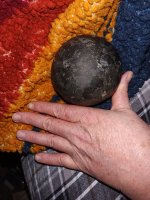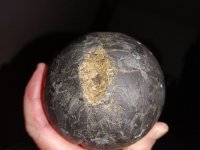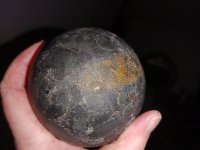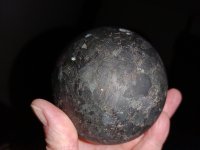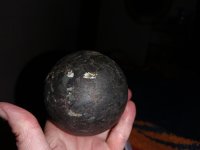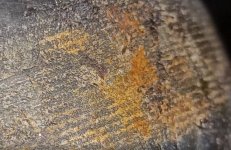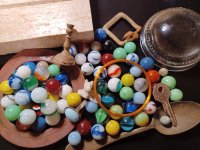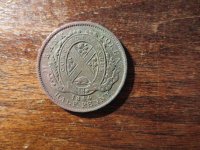Stormesweet
Greenie
- Jan 24, 2022
- 18
- 43
Mysterious item is part of a lot of rocks and fossils I purchased at an estate sale of a farm in Southern MN.
Everything in the box was more or less encrusted in dirt, bore varying degrees of knicks and scratches (probably from being run over multiple times by farm equipment) and splattered with bird poop. So I can infer that the farmer found these specimens on his property, didn't see them a valuable, but also too interesting to toss aside.
This sphere looks like a type of feldspar. The close up pics showed how it flakes around the damaged spots. It's not perfectly round - which could be a result of being run over, or maybe being hand-polished.
Any guesses as to its purpose and why it would be found in a field
Everything in the box was more or less encrusted in dirt, bore varying degrees of knicks and scratches (probably from being run over multiple times by farm equipment) and splattered with bird poop. So I can infer that the farmer found these specimens on his property, didn't see them a valuable, but also too interesting to toss aside.
This sphere looks like a type of feldspar. The close up pics showed how it flakes around the damaged spots. It's not perfectly round - which could be a result of being run over, or maybe being hand-polished.
Any guesses as to its purpose and why it would be found in a field



